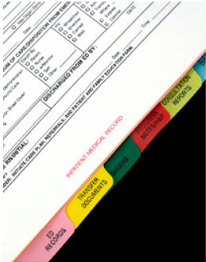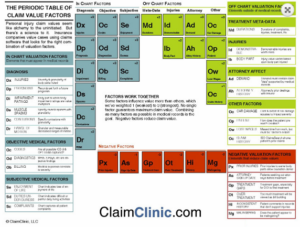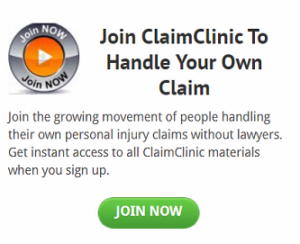The biggest value driver for your claim are your medical records. Adjusters look to them for evidence of your injuries and pain and suffering. In addition to making sure your doctor knows how to treat you, talking to your doctor the right way can also increase your claim’s value.
If you have never seen a doctor’s chart on you, you need to know they write down some of what you tell them. Your comments are usually found in the “Subjective History” portion of your chart. You need to be very careful what you say. Obviously you tell them the truth about your symptoms and injuries. But, you also need to filter non-relevant things people say in general conversation, things such as joking. Also, be very deliberate about when you are feeling improvement. Sometimes a person will say they are feeling great because they want it to be over or because they truly are having a good day (among many painful days). Doctors are always quick to write down your comments about getting better fast because they want to feel like they are having a great impact on your health.
Now you shouldn’t demand the doctor write down everything you are saying. Not only would this upset the doctor but also it could effect your claim if the doctor writes down that you are demanding she write everything. An adjuster will see this and think you are trying to manipulate your claim. Instead, just tell the doctor everything so that you give her every chance to record the information.
Prognosis
 You want to make sure you talk to your doctor about the long term effects of your injuries, called a prognosis (a prediction of the probable course and outcome of an injury) in the medical field. Long term or permanent injuries and symptoms are large value drivers for your case, not to mention you want to know if what you are feeling will get 100% with the passage of time. Some particular things to talk to your doctor about are:
You want to make sure you talk to your doctor about the long term effects of your injuries, called a prognosis (a prediction of the probable course and outcome of an injury) in the medical field. Long term or permanent injuries and symptoms are large value drivers for your case, not to mention you want to know if what you are feeling will get 100% with the passage of time. Some particular things to talk to your doctor about are:
- Broken Bones – Broken bones can lead to arthritis in later years. This is especially true in broken bones in joints. Broken bones can also be more susceptible to re-fracturing later on. Sometimes cold and wet weather can also make pain come back in healed bones years after the accident. All of these things are future pain and suffering damages (i.e. money) in your claim.
- Head Injuries – If you lost consciousness at the scene or your head hit a part of your car, like the steering wheel, side window, or even the airbag, then you need to discuss closed head injuries with your doctor. Closed head injuries can be very subtle and not cause problems until many years later.
- Range of Motion – If you are having problems with not getting your full range of motion back in your joints or body parts, you need to discuss this with your doctor. If you don’t get all your motion back, you should talk to him or her about assigning a permanent impairment rating.
Bonus
 By now you are starting to figure out how important your medical records are in driving your claim’s value. Click on the infographic to the right to see all the different types of value drivers in your medical records. We walk you through each factor inside the ClaimClinic so that you can formulate a good estimate of your claim’s value. You’ll get a worksheet that shows you how to go through copies of your medical records (you should be getting these and sending them to the adjuster, not letting the adjuster get them him/her self) and pull out all the data in preparation for putting the facts and arguments in a powerful Demand Letter that you will send to the adjuster.
By now you are starting to figure out how important your medical records are in driving your claim’s value. Click on the infographic to the right to see all the different types of value drivers in your medical records. We walk you through each factor inside the ClaimClinic so that you can formulate a good estimate of your claim’s value. You’ll get a worksheet that shows you how to go through copies of your medical records (you should be getting these and sending them to the adjuster, not letting the adjuster get them him/her self) and pull out all the data in preparation for putting the facts and arguments in a powerful Demand Letter that you will send to the adjuster.
We hope you learned something important in your final free tip. ClaimClinic is chocked full of information on how to handle your own car accident claim. The critical modules that can result in ClaimClinic paying for itself are:
- Documenting Your Claim – adjusters only consider evidence that is documented. If you don’t put forth the right documentation, you won’t get the best offer.
- Dissecting Medical Records – the biggest source of claim data for the adjuster is your medical records. Learn to pull out all the valuable information in your medical records and serve up your claim’s injuries and pain and suffering date to the adjuster.
- Writing Demand Letters – the Demand Letter is the single most important thing you will do in your claim. ClaimClinic will teach you a method to write your Demands, step-by-step, that will give the adjuster all the information in such a way to position your settlement for its highest value.
- Negotiations – learn adjuster tactics and how to respond to their offers.
We hope you join the 51% of people who are successfully handling their own claims. Only you, by using ClaimClinic, will do it better then most.















